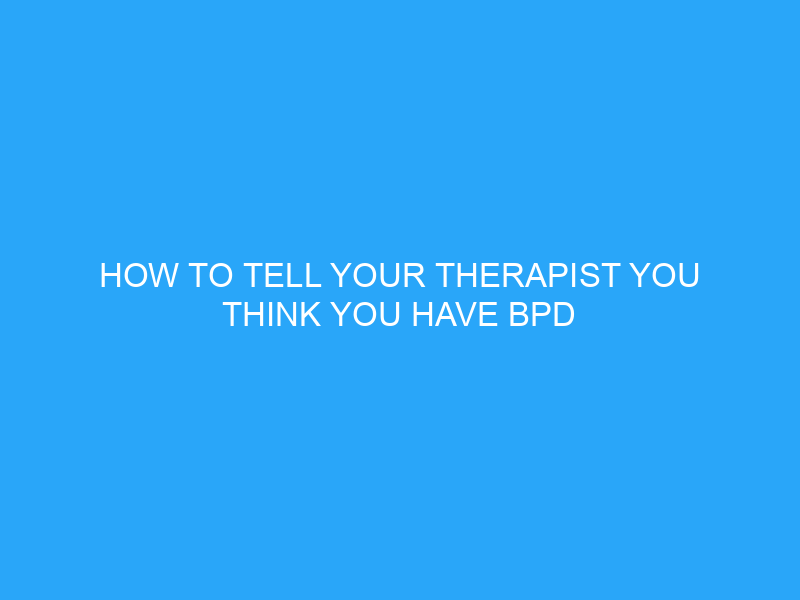Introduction: If you’re feeling overwhelmed and believe you may be suffering from Borderline Personality Disorder (BPD), the first step is to tell your therapist. Talking to your therapist about your feelings and experiences can be daunting, but it is an essential part of seeking help. Here are some tips for how to tell your therapist that you think you have BPD.
What is Borderline Personality Disorder?
Borderline Personality Disorder (BPD) is a mental health condition characterized by a pervasive pattern of instability in emotions, relationships, and behavior. People with BPD may experience intense emotions, difficulty controlling their impulses, and difficulty maintaining relationships. Symptoms of BPD can include extreme mood swings, difficulty regulating emotions, fear of abandonment or rejection, impulsivity, reckless behaviors, self-harm, and suicidal thoughts or behavior.
How to Talk to Your Therapist About BPD
1. Be Honest: The first step to telling your therapist about your feelings is to be honest. Describe your experiences in detail, as this will help your therapist understand your concerns and provide the best care for you.
2. Prepare Beforehand: Before talking to your therapist, take some time to reflect on your feelings and experiences. Writing down your thoughts and feelings can help you organize your thoughts before meeting with your therapist.
3. Express Your Feelings: Expressing your feelings is essential in talking to your therapist about BPD. Be open and honest about your emotions and how they are affecting your life.
4. Ask Questions: If you have any questions about BPD, feel free to ask your therapist. They can provide insight into the disorder and answer any questions you may have.
5. Take Your Time: There is no need to rush through this discussion. Allow yourself the time to process your feelings and take breaks if needed.
Frequently Asked Questions about Borderline Personality Disorder
What Causes Borderline Personality Disorder?
The exact cause of Borderline Personality Disorder is unknown, but a combination of biological, psychological, and environmental factors is likely to play a role. These can include genetics, early childhood trauma, and stressful life events.
What are the Signs and Symptoms of Borderline Personality Disorder?
Common signs and symptoms of BPD include intense emotions, difficulty controlling impulses, fear of abandonment and rejection, impulsivity, reckless behaviors, self-harm, and suicidal thoughts or behavior.
How is Borderline Personality Disorder Treated?
Borderline Personality Disorder is typically treated with a combination of psychotherapy and medication. Psychotherapy, such as Dialectical Behavior Therapy (DBT), can help people with BPD learn to manage emotions, reduce impulsivity, and develop healthy relationships. Medication, such as antidepressants and antipsychotics, can help to reduce symptoms of depression and anxiety.
Can People with Borderline Personality Disorder Lead Healthy Lives?
Yes, with the right treatment and support, people with BPD can lead healthy and productive lives. Treatment can help people with BPD manage their symptoms and lead fulfilling lives.
Conclusion
Telling your therapist that you think you have BPD can be intimidating, but it is an essential step in seeking help. By being honest and open with your therapist, you can begin to get the help you need to manage your symptoms and lead a healthy life.






